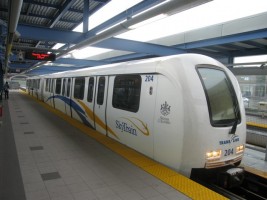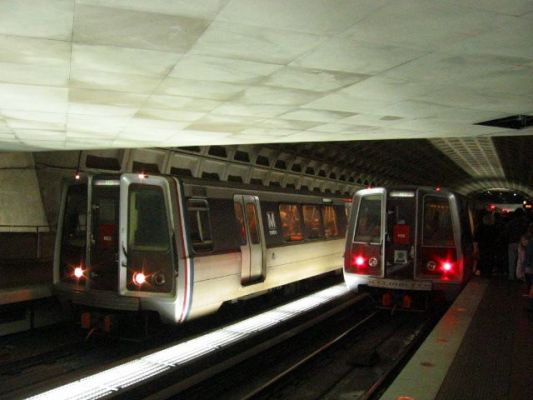Orion V 70
Location: South Eads Street at South Rotary Road, Arlington, VA
Operator of Vehicle: Alexandria Transit Company
Date of Photo: July 19, 2018
For those of you who know the DC area well, your first reaction to seeing this photo is that one isn’t supposed to be taking photographs at this location. It is a reasonable first reaction, as this photo was taken on the Pentagon Reservation, and photography is generally prohibited there. But notice my use of the word generally. Photography is allowed at the September 11th Memorial adjacent to the Pentagon (though the DoD was reluctant to permit this when the memorial opened). However, this isn’t where the photo was taken. So what’s the secret? I did have authorization to be taking photos at the Pentagon that morning, and there were Pentagon police officers nearby at the time. However, like many things that go on at the Pentagon, I can’t really reveal how I got this authorization or how one might go about doing so (other than to say the circumstances were somewhat unique, so anyone else trying to replicate them is likely to be unsuccessful).
As for the bus itself, as rare as photos of DASH buses of any sort at the Pentagon might be, photos of Orion V DASH buses are becoming a rarity as well. This specific unit is about 16 years old, is among the last high floor buses remaining in the DASH fleet. Catch these while you can anywhere in the DASH service area, because they are due to be reassigned to the “big bus garage in the sky” in the very near future as newer Gillig Advantages arrive.
For more photos of DASH, please click here.


